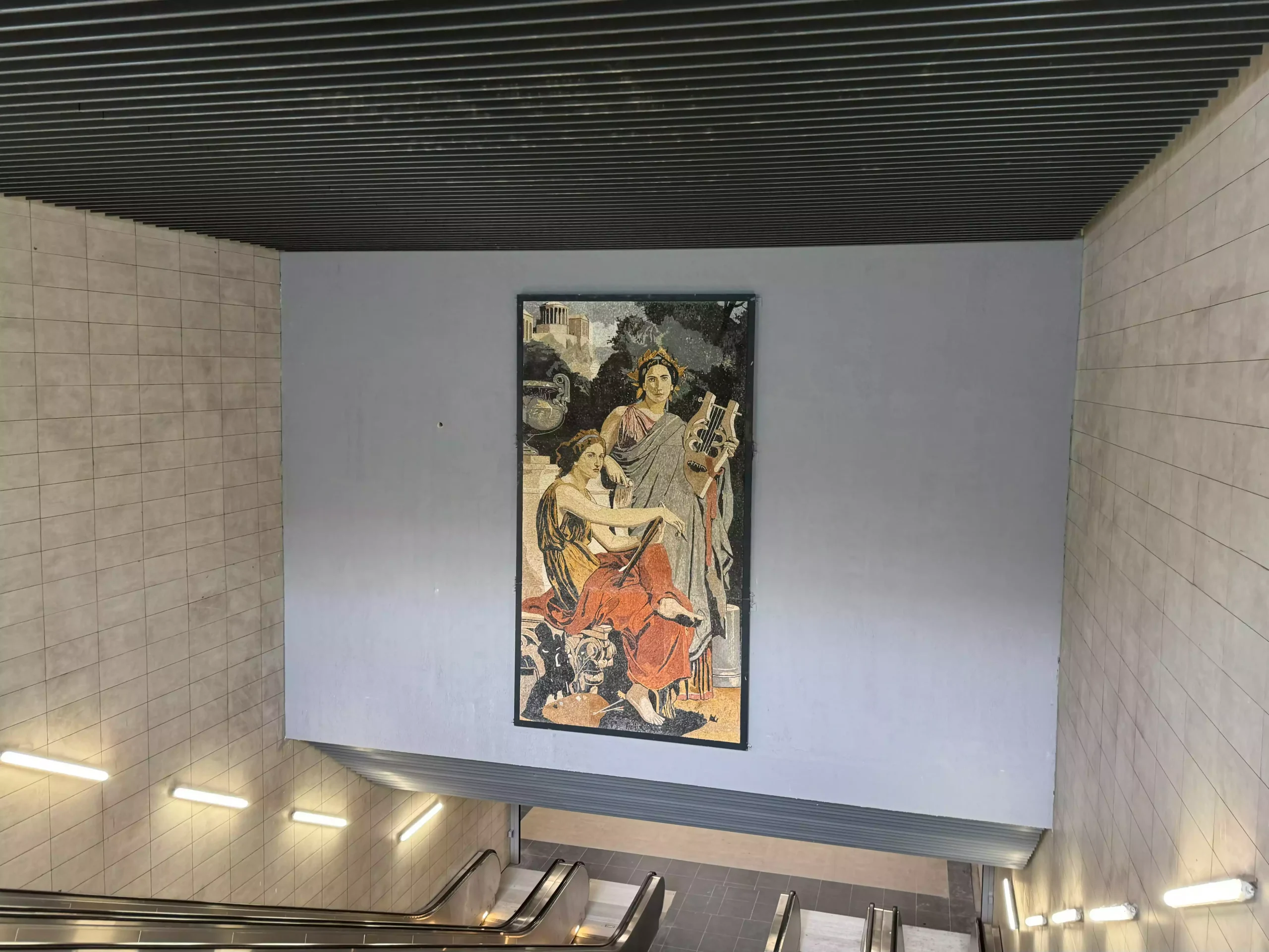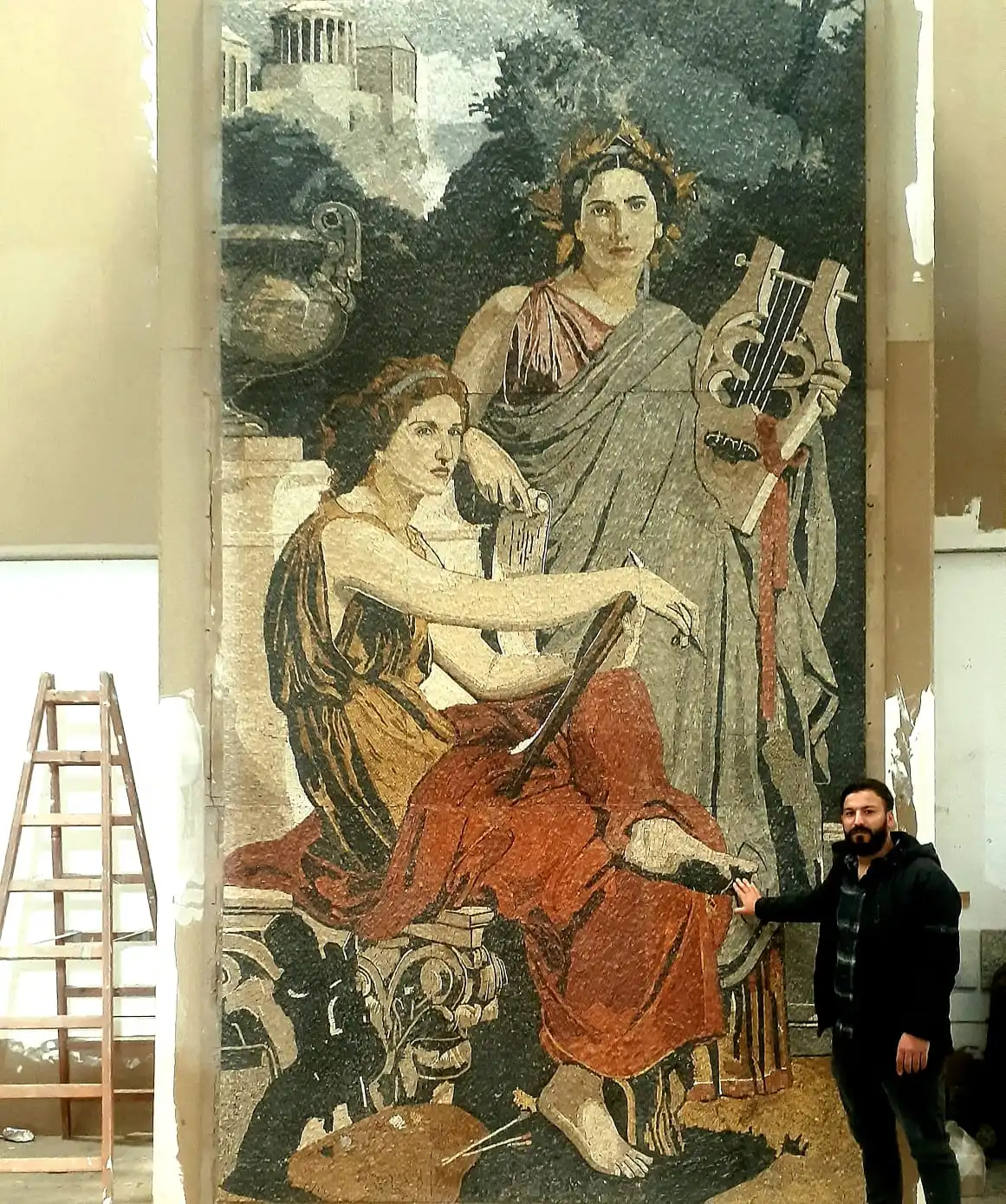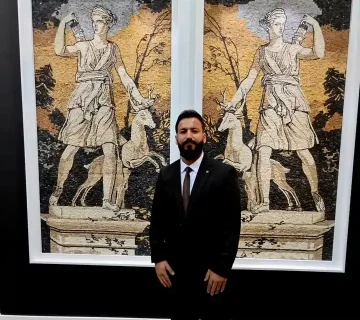Bouguereau’s ‘Music and Literature’ in Mosaic Art
”As an artist, I believe that every material has its own voice. Bouguereau’s canvas whispered elegance; my mosaic sings of endurance. Art is not confined to one form—it adapts, it transforms, and it survives. And in this transformation, it finds new meaning, breathing life into both the past and the future.” Ali Zeren
Introduction
William-Adolphe Bouguereau, the renowned 19th-century academic painter, created “Music and Literature” in 1867, a work that embodies the elegance and refinement of the era. His meticulous brushwork and delicate portrayal of figures have long inspired artists across generations. But what happens when such a masterpiece is transformed into a mosaic? Enter Ali Zeren, a contemporary mosaic artist who has undertaken the ambitious task of translating Bouguereau’s oil-on-canvas elegance into the language of tesserae and stone.
Bringing Bouguereau into Mosaic
As a mosaic artist, I have always been captivated by the challenge of reinterpreting classical paintings using an ancient medium. Bouguereau’s work, known for its smooth transitions and hyper-realistic textures, is the antithesis of the rough and fragmented nature of mosaic. This paradox is exactly what drew me to this project. How does one capture the softness of fabric, the luminous glow of skin, and the intricate interplay of light and shadow—all with mere pieces of stone and glass?
Stone by Stone, a Legacy Rebuilt
Transforming “Music and Literature” into a mosaic was an arduous yet exhilarating journey. First, I studied Bouguereau’s original composition, analyzing the intricate folds of drapery, the delicate facial expressions, and the ethereal background. Every nuance had to be reconsidered through the constraints of the mosaic medium.
I began by selecting my tesserae—pieces of colored marble, smalti, and glass that would form the final image. Bouguereau’s nuanced palette posed one of the greatest challenges. Unlike paint, where colors can be mixed seamlessly, mosaics require precise placement of individual tiles to simulate shading and depth. I spent weeks sourcing the right shades, ensuring that the transitions between light and shadow maintained the integrity of Bouguereau’s vision.
Then came the painstaking work of laying each tessera. The human figures, with their delicate skin tones, required an almost painterly approach, using thousands of tiny, meticulously arranged stones to recreate the soft gradations. The background, featuring the distant Acropolis, demanded a different technique—broader strokes of color to evoke the atmospheric perspective Bouguereau so masterfully achieved.
Balancing Realism and the Mosaic Aesthetic
One of the biggest obstacles was maintaining the emotional depth of the original painting. Bouguereau’s women are not just figures; they are embodiments of grace and intellect. In mosaic form, their expressions had to remain just as poignant. The eyes, in particular, were a trial of precision—one misplaced tessera and the entire gaze could shift from serene to lifeless.
Another challenge was texture. Bouguereau’s oil paintings have an almost porcelain-like smoothness. Mosaics, by nature, are tactile and fragmented. I had to find a balance—ensuring that the composition retained the painterly quality while embracing the mosaic’s inherent ruggedness.
A Tribute in Stone
After months of labor, “Music and Literature” emerged in its new form—a testament to both Bouguereau’s genius and the enduring legacy of mosaic art. Standing before it, one can still feel the harmony of music and the depth of literature emanating from the figures, now immortalized in stone.
For me, this project was more than just a technical exercise; it was a dialogue across centuries. It proved that classical art, no matter the medium, continues to inspire and evolve. Bouguereau painted with oils; I painted with stone. But the essence remains unchanged—an ode to beauty, intellect, and the timeless nature of art.





Yorum yok